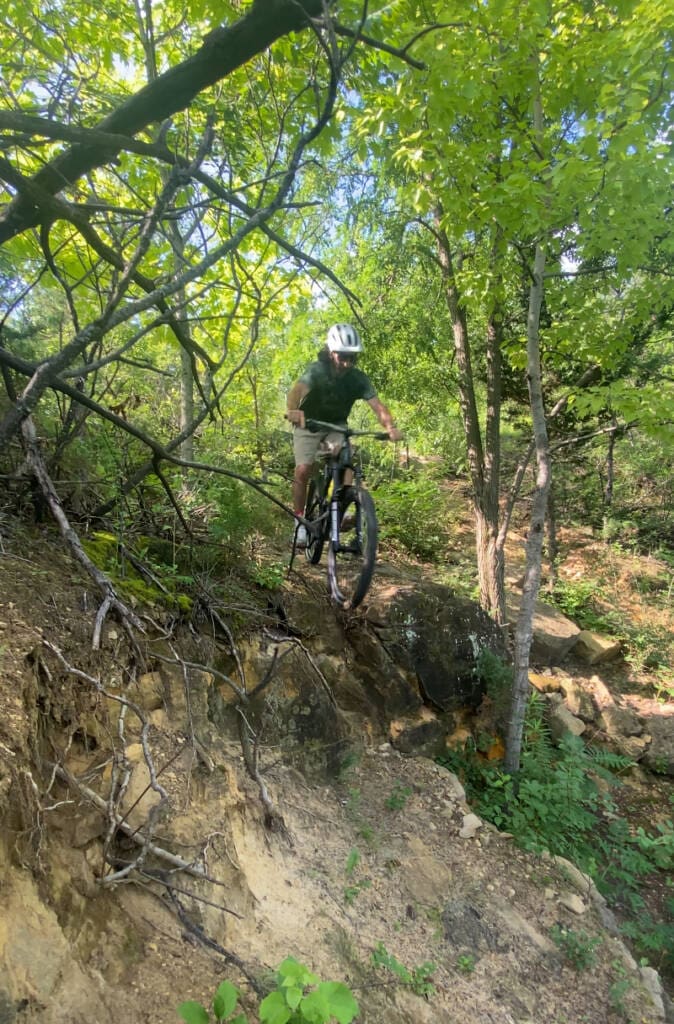When the trails are dry and the days are long, most riders want to do just one thing: ride. But as your mileage builds and races or big adventures fill your calendar, so does the wear and tear on your body. That’s where smart in-season mountain bike training and conditioning comes in — not to build a bigger engine, but to keep it running efficiently.
Let’s break down what effective in-season training looks like, and how you can structure it to stay strong, ride longer, and reduce injury risk while still leaving gas in the tank for your best days on the bike.
Why In-Season Mountain Bike Training Matters
Think of in-season training as maintenance mode. The focus shifts from building new strength or chasing PRs in the gym to maintaining what you’ve already built. Here’s what it helps you do:
- Avoid overuse injuries by balancing muscular imbalances and improving joint stability
- Stay strong under fatigue, especially late in long rides or races
- Maintain power and explosiveness for sprints, technical sections, and climbs
- Reduce burnout by giving your body more movement variety than just pedaling
Key Elements of In-Season MTB Training
Here’s what an effective in-season program includes:
1. Short, Focused Strength Sessions (1–2x/week)
Keep sessions under 45 minutes. The goal is to preserve muscle mass, joint integrity, and neuromuscular coordination—not build max strength. Focus on:
- Core Stability: Pallof press, dead bug, side planks
- Posterior Chain: Deadlifts (light to moderate), hip thrusts, kettlebell swings
- Single-Leg Strength: Step-ups, Bulgarian split squats
- Upper Back & Grip: Rows, farmer carries, band pull-aparts
💡 Tip: Use circuits or supersets to get more done in less time without overly fatiguing your system.

2. Mobility & Recovery (Daily or as needed)
Your hips, low back, and shoulders take a beating on the bike. In-season is the time to prioritize joint mobility and soft tissue work to stay supple and pain-free.
- Hip openers, spinal rotation drills, and banded shoulder mobility work are your friends.
- Use a foam roller or lacrosse ball to target your glutes, quads, lats, and T-spine after long rides.
For a complete guide on recovery for mountain bikers, check out this article I wrote.
3. Low-Impact Conditioning (Optional, 1x/week)
On weeks with lower riding volume or intensity, short conditioning workouts off the bike can help maintain aerobic capacity without more saddle time.
Try a 20–30 min session like:
- Row + bodyweight circuit (pull-ups, pushups, lunges)
- Airbike intervals + core (Tabata or EMOM format)
4. Ride Smart: Balance Intensity
You can’t go full gas every ride. Use a mix of:
- 1–2 harder/intense rides per week
- 1–2 lower-intensity, skill-focused, or fun flow rides
- Rest or cross-training days when needed
Recovery is where adaptation happens. Skipping it leads to burnout or injury.
Takeaways
You don’t need to crush yourself in the gym during the riding season. In fact, the goal is the opposite: move well, recover well, and stay durable so you can shred more consistently. Your in-season mountain bike training should complement your riding—not compete with it.
Ride strong, recover smarter, and make every mile count.
Want a customized in-season MTB program?
Whether you’re racing enduro or just chasing big weekends in the mountains, I can help you stay strong and ride your best all season long. Reach out and let’s build a plan that works for your goals and schedule.

